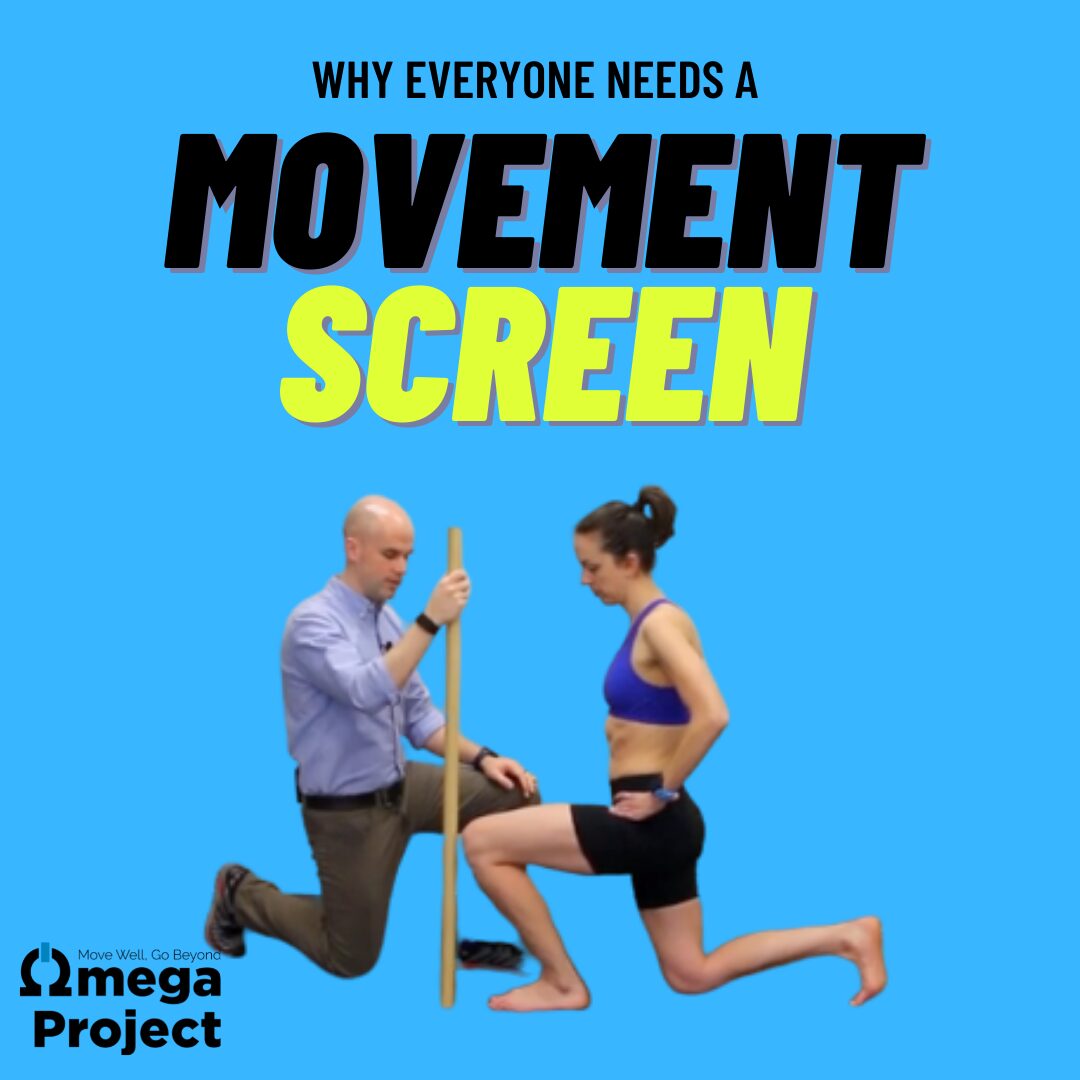No matter what level of activity or what sport you participate in, a movement screen is your answer to moving better with less pain. For some, your current level of fitness and athletic ability is the priority. For others, aging gracefully and feeling good for the long haul is the priority. Either way, knowing how you’re currently moving is the first step toward achieving that goal.
There are two types of movement screens. The general term movement screen is actually used to define an assessment tool used to determine future risk of injury. This type of assessment can be performed by most fitness professionals. For example, a strength coach might determine that their athlete’s limited shoulder mobility will put them at risk of a shoulder injury.
A movement assessment, on the other hand, is a diagnostic tool. This can only be performed by a healthcare professional. This assessment tells us why you have the limitation with certain movements. For example, shoulder mobility is not always limited because of a lack of flexibility or shortened tissue. Shoulder mobility can also be limited because of a lack of strength or stability. If the muscles around the shoulder are not strong enough to control the mobility of the shoulder, the brain tells those muscles to tighten up to protect the shoulder. In this case, if you stretch the muscles around the shoulder, the problem could get worse.
For the purposes of this article, we’re going to use the term “movement screen” to address both the screen and assessment because we simply want to tell you how beneficial these assessments are for your overall health and performance.
Getting a Movement Screen Before You Have Pain…
Often, when I’m explaining what’s wrong to someone who’s seeing me for an injury they ask, “how did this happen?” Well, unlike a car, our bodies don’t have a check engine light. We don’t get any annoying symbol on our dashboard that says, “Hey, something might go wrong soon!” In other words, the reason you’re having pain now is likely that something started to go wrong in your body quite a while ago. Back to the shoulder, we know that limited shoulder mobility seen during a screen is a predictor of a shoulder injury in a throwing athlete. We can further assess that and figure out why shoulder mobility is limited. If you know ahead of time that you need to work on the strength of your shoulder and mobility of your upper back, you may never end up seeing me for that shoulder injury and you won’t be asking “how did this happen?”
This happens all the time for chronic and overuse injuries. Some part of your body is usually not moving right to cause the pain and disability of an injury. For Achilles tendinitis, it might be that your glutes aren’t strong enough. For knee pain, it might be that your ankle has limited mobility. These are all things that can be addressed before the onset of the injury and pain.
Similarly, these movement dysfunctions can put athletes at risk of acute injuries as well. For example, ACL injuries more commonly occur in athletes with weakness of the hips and core. We can easily assess this risk by having an athlete perform a single leg squat during a movement screen.
Hopefully, you’re all starting to get the urge to get yourself a movement screen. After all, no one wants to miss out on doing what they love because of an injury that could have been prevented. You also probably don’t want to end up at an older age and realize you’ve lost the mobility to even participate in that activity.
Even better, most of the mobility improvements made after a movement screen (if you do your exercises!) improve performance, as well! It’s a win-win!
Getting a Movement Screen When you Have Pain…
Your best chance at healing from an injury and making sure it doesn’t come back is to find the root cause of an injury. Through the movement assessment, a health professional can tell you what movements are limited and why they are limited. Typically it will be limited due to lack of flexibility or lack of stability. It is then easy to relate that movement limitation to your current injury.
Rather than treating your injury with a cookie-cutter approach, you’ll learn exactly what you need to do to get better. When you are given a specific set of exercises that address your limitations, your path toward pain free activity will be much easier.
We offer free movement screens!
Our passion is to keep you from missing what you love. Whether you’re looking to reduce injury risk or are currently dealing with an injury, now is the time to get a movement screen to see what you can do to maximize your movement and decrease pain. Schedule a discovery visit today!

